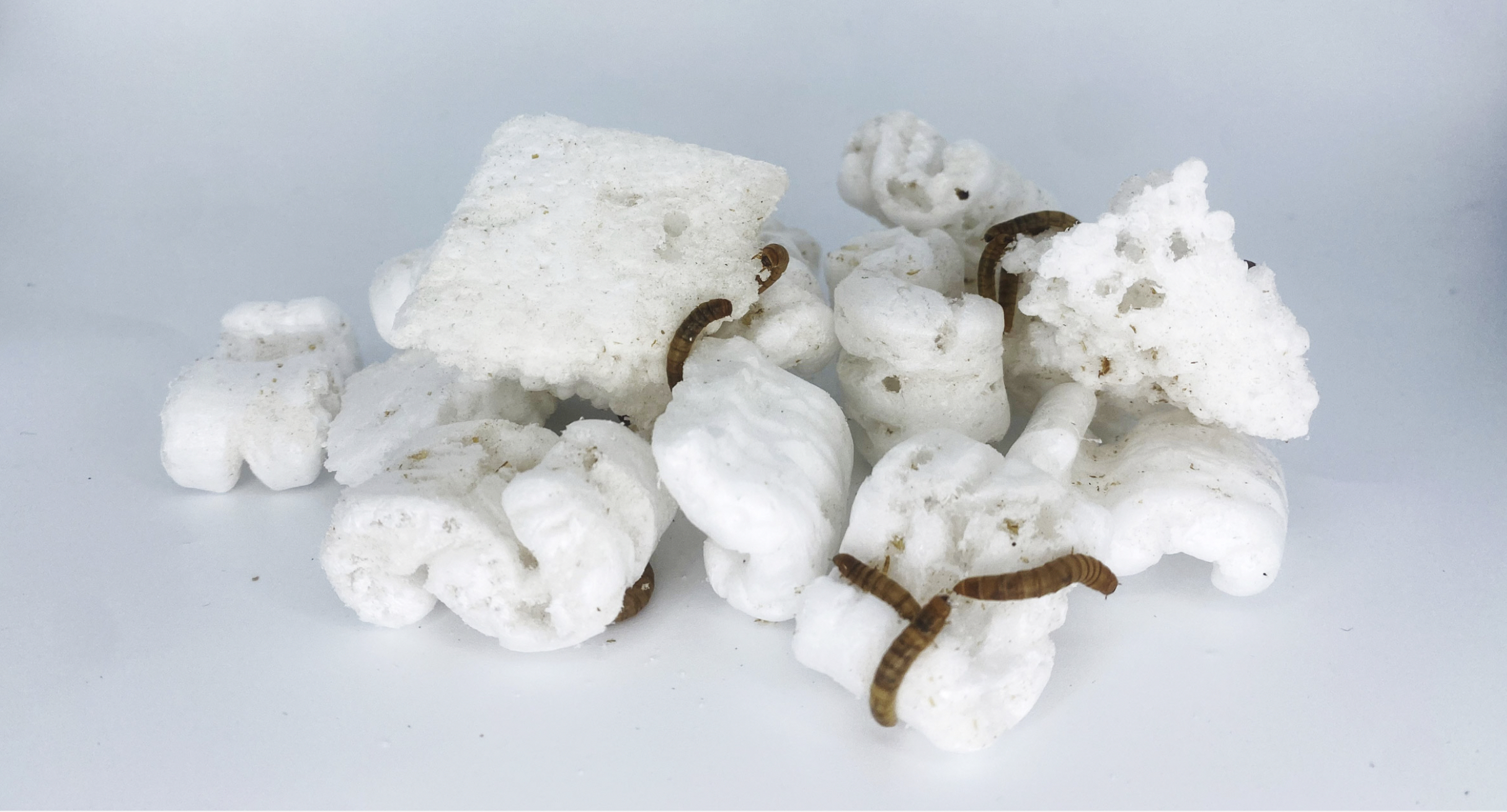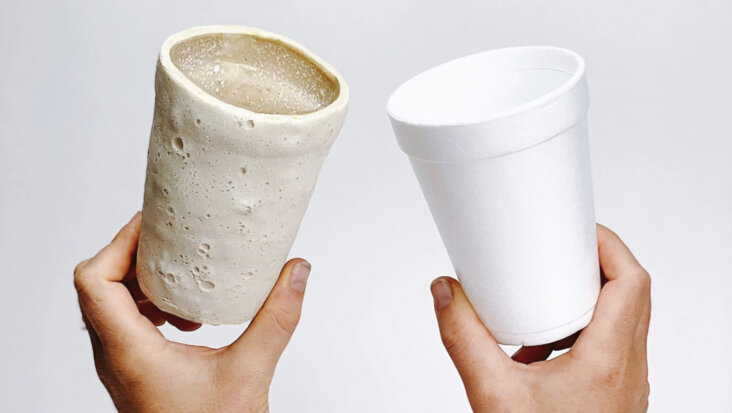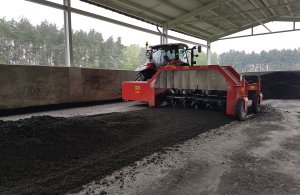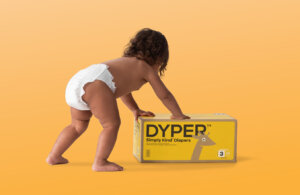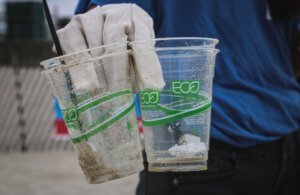Designer Duo Charlotte Böhning and Mary Lempres of Doppelgänger have developed a home compostable version of polystyrene foam that is made from the exoskeleton of edible mealworms and breaks down in soil in a couple of weeks. Called Chitofoam, the new biofoam material is shock-absorbent, water-resistant and can be cast or injection-moulded into shape, much like Styrofoam. Chitofoam is derived from the exoskeleton of styrofoam-eating mealworms. “Once the mealworms have reached the end of their life, the designers collect them from the biodigester and extract the chitin from their exoskeletons by treating them with an alkaline solution, in a process known as deacetylation. This powdered chitin derivative called chitosan is then dissolved in citric acid, mixed with a waste-derived biopolymer that the studio is keeping under wraps until its patent application has been granted. Vigorous shaking ultimately gives the mixture its characteristic foamy consistency, which Doppelgänger says is more flexible and elastic than traditional expanded polystyrene while having natural antifungal and antimicrobial properties. As Chitofoam is a thermoplastic it can be melted down and reformed into new products, or placed in soil where it decomposes in two to three weeks.”
How worms could help solve plastic pollution (DW Planet A)
